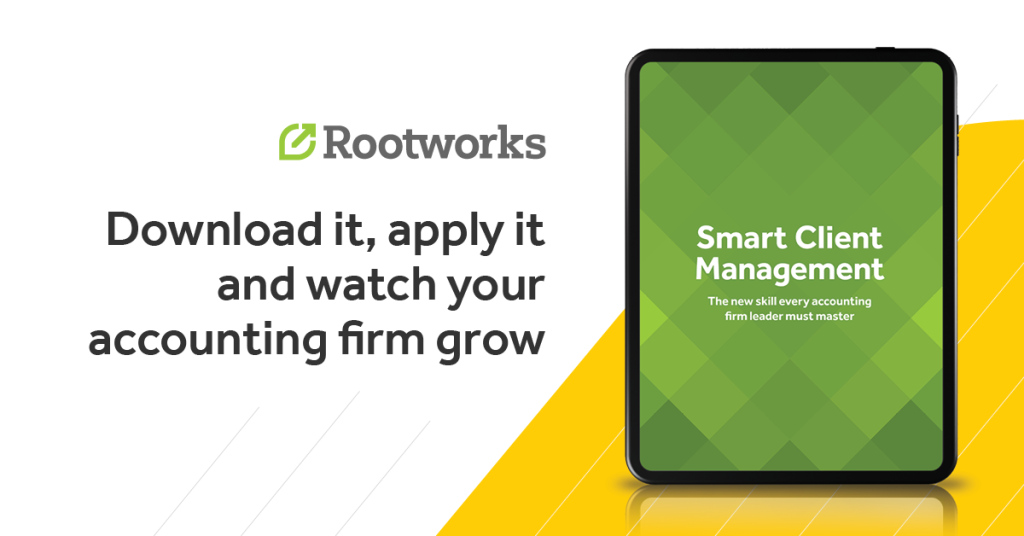Let’s face it. Tax season is a marathon.
And in this post-pandemic world, it’s a marathon we need to prepare for differently than before. As staff leave for firms with a healthy work-life balance, many firms face a new obstacle in the coming busy season: an employee shortage.
Fear not—there are things you can do to make tax season better. Am I saying it won’t still be hard? Not at all. But when you take a proactive approach, you take back control of tax season.
Many firms are facing the same challenges: a worker shortage, the need for a better client experience and the need for a better accounting firm culture. If you continue to do tax season the way you’ve always done it, those challenges won’t improve. And the staff shortage will remain your biggest challenge.
You need to shift the way you’re doing business and take control of busy season. And it all starts with your business model. I define business model as who you want to serve, what you want to sell them and how you want to deliver those services. For the sake of this article, I’m going to focus on four HOWs that can ease the burden of busy season.
Changing the tax component of your business model to implement standardization can reduce staff time by as much as 30%. It’s important to make intentional changes to support your staff throughout tax season and beyond. So, let’s talk about what you can do now to get a handle on this busy season…
Digitize everything

One of the most important things you can do to take control of tax season when you’re short-staffed is to digitize everything. And I do mean everything. There’s a myth that some clients don’t want to digitize anything, or they feel more comfortable with paperwork. I can say with certainty that it just isn’t true. Clients are pliable; they know (and want) to go fully digital—you just have to provide the leadership and standardization to show them the way.
Determine how you’ll gather, prepare, review and deliver returns, so you can fully automate your process. One tool I like is SPbinder by SurePrep®. It standardizes painstaking return processes by automatically bookmarking and organizing tax documents and cuts down on time spent reviewing returns.
Move to 100% digitization, and you’ll improve efficiencies right away instead of spending your time with manual paperwork.
Implement a Client Communications Manager

How do you get your clients to adopt a digital work environment? You name someone in your firm as the Client Communications Manager, who handles all end-to-end communication with your clients. They’re the ones who will set expectations around clients becoming fully digital (no exceptions!), reach out to clients to obtain missing information, and get signatures and payments so the rest of your team can concentrate on preparing tax returns.
Without a Client Communications Manager in place, your firm’s processes can be inconsistent. Work hours are extended and critical communications can fall through the cracks, especially when it comes to time-sensitive deadlines. And before you ask, yes, they handle all communications, freeing up time so the rest of your staff can pay attention to the tasks at hand instead of responding to email communications.
Create tax return levels
When it comes to tax returns, firms need to establish tax return levels to minimize wasted energy—and save valuable time—for you and your team. Firms have a tendency to treat all tax returns the same, but in reality, they aren’t…some returns are easier than others and, if you have competent staff, they probably don’t need to be reviewed.
For example, if you typically process 1,000 tax returns in a season, think about the amount of time spent just reviewing some of the simpler tax returns. It’s astronomical and not at all sustainable…it’s just adding long hours to your already long days.
Define three levels of tax returns: Level 1, Level 2 and Level 3. (Rootworks members, you can access information on how to do this in our online learning library.)
- Level 1 consists of tax returns that don’t require a manager or partner review. If you have a qualified staff member who can prepare the return, then these returns can skip to processing. This can account for about 70% of your returns.
- Level 2 includes more complicated returns that require a manager or partner to review before processing.
- Level 3 returns may be out of your firm’s scope of knowledge or too complex and should be outsourced to a firm that specializes in the area scope.
Bottom line: Don’t treat all tax returns the same—because they’re not all the same.
Establish a notice protection plan
Another way to save time and add significantly to your firm’s bottom line is by creating a notice protection plan (previously known as an audit protection plan) as a line item on your tax return invoice. This will answer the question, “Do we charge the client if they get a worrisome tax notice later down the road?”
By adding the notice protection plan as a line item (I recommend charging 20%-25% of the tax prep fee) and allowing clients to opt out, it’s communicating that your firm will charge for the time spent on notices your clients may receive. This tip won’t necessarily save you time during tax season, but it’s proactive and will set an important boundary down the road when it comes to saving time for an understaffed firm.
Take control of tax season
Don’t do the things you’ve always done just because you’ve always done them that way. Take the time right now to print your client list and go through it. Determine each client’s tax return level and the process they’ll follow. And most important, let your team know the plan before the busy season.
If your firm gains 20% of time savings during this coming tax season (and assuming a 60-hour work week), that’s 12 hours saved each week—a huge difference. That means an improvement in mental health, a good work-life balance and a successful tax season.
You can’t snap your fingers and magically make tax season perfect. But you sure can take steps now to make it better.
For more information on improving tax season for your firm, download our Smart Client Management eBook.



